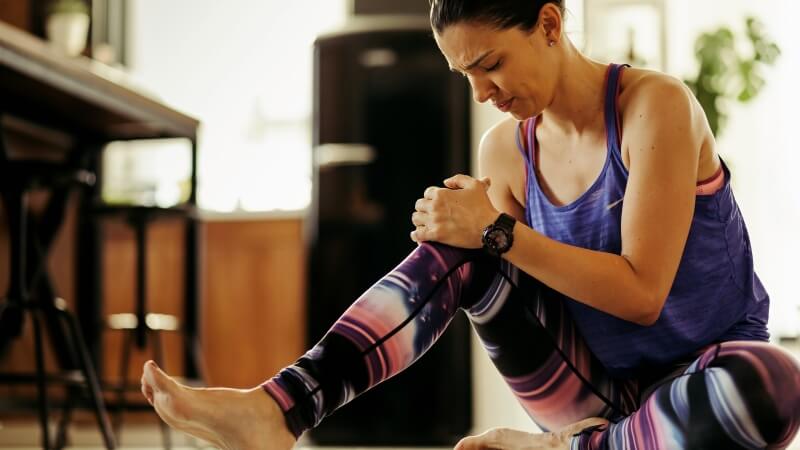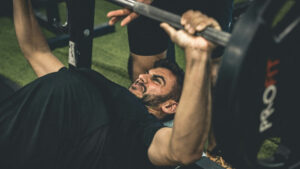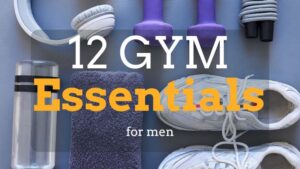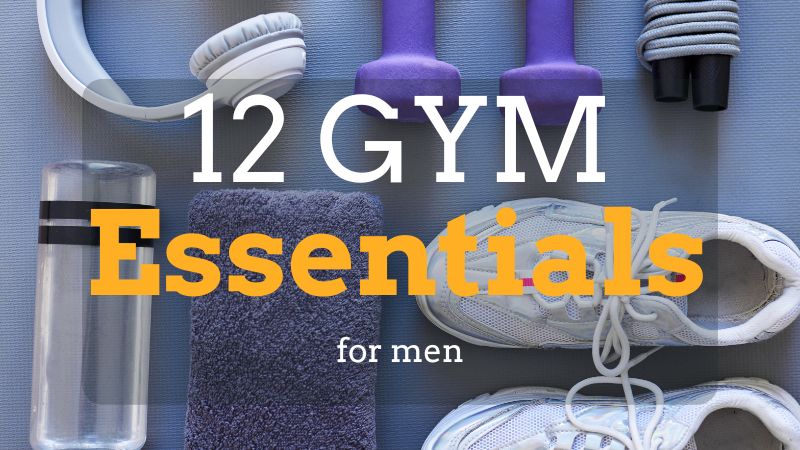
Gym Essentials For Women:A Complete List
Enthusiasts who never miss a session, understanding the gym essentials for women is crucial, not just for what to wear but also for what to

If you’re reading this, you’re likely familiar with muscle pain after workout, a common experience for newcomers at the gym. This discomfort, while daunting, is a normal part of starting an exercise routine.
So, what causes this pain after the initial gym session? Engaging in physical activity results in minor tears within your muscle fibers, essential for muscle growth. The pain is due to inflammation and soreness as your body heals these small injuries.
However, this discomfort should not deter you. On the contrary, it indicates your progress towards fitness goals. Understanding the challenge of continuing gym visits amidst this pain, we’re here to offer advice on alleviating muscle soreness post-gym and finding relief from workout-induced discomfort.
For those puzzled by post-gym pain or enduring discomfort after their first gym workout, this blog is tailored for you. Join us as we explore practical tips to manage gym-induced muscle pain and maintain momentum in your fitness journey!
Emphasize the necessity of warming up prior to embarking on your exercise regimen. Allocate 10 – 15 minutes pre-workout for muscle preparation via stretching exercises, complemented by light aerobic activities (such as a quick-paced walk).
This strategy enhances blood flow to the muscles, contributing to both mitigation of gym-induced discomfort and facilitation of recovery.
Many novices encounter discomfort and even injuries like sprains from their initial gym sessions due to incorrect form or technique, particularly when navigating gym equipment or engaging in weight lifting.
To manage and prevent post-gym soreness, it’s crucial to learn and apply the correct methods for using gym apparatus and lifting weights.
Whenever possible, seek guidance from gym trainers before attempting exercises independently. Moreover, it’s vital to avoid excessive exertion at the start of your fitness journey.
Neglecting to stretch is a common oversight that can lead to significant discomfort following your first gym day.
Dedicate time within your workout to focus on enhancing flexibility and engaging in stretching activities. Post-exercise, initiate a cool down to decrease your heart rate, followed by thorough stretching.
Stretching serves as an effective measure to break the cycle of muscle tightness and contractions, thereby alleviating muscle spasms and soreness.
Experiencing discomfort without severe swelling or acute pain suggests that an ice pack could be a soothing remedy for muscle soreness after your first gym session.
It’s a straightforward and efficient method for alleviating post-gym muscle pain. For more severe reactions to a workout, seeking medical advice is recommended.
Fluids are crucial for muscle recovery. Ensure you’re consuming approximately 230 ml of water every 15-30 minutes during exercise. Neglecting to stay hydrated can intensify the soreness and delay recovery from muscle pain after gym sessions.
Your muscles require proper nutrition for repair, whether it’s recovery from initial gym soreness or other physical activities.
Eating proteins before and after your workout aids in muscle protein synthesis and recovery, while carbohydrates fuel your next exercise session.
A balanced diet accelerates recovery from muscle soreness following your first day at the gym.
The inclination might be to rest following the onset of post-gym soreness, but this could increase discomfort. Active recovery, such as swimming, cycling, or walking, can help alleviate the pain from your first day at the gym by promoting circulation and muscle use.
Delayed onset muscle soreness (DOMS), a common occurrence with new exercise routines, can be significantly alleviated with a massage. Studies indicate that massages post-exercise can reduce muscle pain and soreness, aiding in faster muscle recovery by enhancing tissue regeneration.
For those experiencing soreness after their initial gym session, sufficient rest is the key to recovery. Sleep allows your muscles the necessary downtime for recuperation from the workout. Individuals engaging in rigorous exercise routines require more rest than those with less intense workouts.
During sleep, your body generates hormones and compounds crucial for alleviating gym-related muscle soreness and facilitating recovery, thus accelerating the healing process.
To enhance recovery from gym-induced muscle soreness, it’s equally important to be aware of habits to avoid. Minimizing or eliminating the intake of processed foods during your workout regime is advisable.
Furthermore, abstaining from alcohol and tobacco is crucial as they can hinder muscle recovery, making it easier to manage body pain post-gym without needing to look up solutions.
Enduring the discomfort from your first day at the gym without seeking relief can impede your progress and diminish your motivation for subsequent workouts.
Applying a pain relief cream or gel, such as Omnigel, can provide solace for aching muscles, address body pain from the first day at the gym due to sprains, strains, or even injuries incurred during your workout.
This form of pain relief aids in reducing stiffness and inflammation, offering quick and enduring relief from gym-induced discomfort.
As you navigate through the initial challenges and soreness that come with beginning a gym routine, it’s crucial to focus on developing long-term fitness habits.
Consistency is key in transforming your efforts into a sustainable part of your lifestyle. Here are strategies to ensure that your fitness journey continues well beyond the initial discomfort:
By integrating these strategies into your routine, you’ll not only overcome the initial hurdles of starting at the gym but also pave the way for a healthy, active lifestyle that lasts.
Remember, the journey to fitness is a marathon, not a sprint. Patience, persistence, and self-care will guide you towards achieving and maintaining your fitness goals.
In summary, muscle pain after workout sessions, especially for newcomers to the gym, is a common and expected experience, signaling the beginning of your fitness journey rather than serving as a deterrent.
Understanding the origins of this discomfort post-first gym visit sheds light on its natural role in muscle development, guiding you toward effective strategies for relief and recovery.
Key practices such as proper warm-up, correct exercise techniques, and incorporating cooldown and stretching phases play pivotal roles in managing and preventing soreness.
Moreover, remedies like applying ice packs, maintaining hydration, optimizing nutrition, engaging in low-impact exercises, considering massages, and ensuring adequate rest are essential for alleviating post-workout discomfort.
Beyond immediate relief, establishing long-term fitness habits — setting realistic goals, creating a balanced routine, listening to your body, seeking support, celebrating progress, and staying flexible — ensures the sustainability of your fitness journey.
With these insights and actions, you’re equipped to mitigate muscle pain after the gym, paving the way for a healthy, active lifestyle.
What can I do if I still feel sore even after following all the post-workout recovery tips?
If soreness persists despite following recovery tips, consider adjusting your workout intensity or duration. Your body may require more time to adapt to the new physical demands. Additionally, ensure you’re getting enough sleep and consider consulting with a healthcare professional to rule out any underlying conditions.
How often should I change my workout routine to avoid muscle pain?
To prevent muscle pain and adapt to your body gradually, consider changing your workout routine every 4 to 6 weeks. This adjustment helps avoid plateaus and ensures all muscle groups are engaged over time, reducing the risk of overuse injuries and soreness.
Can muscle pain after a workout indicate something more serious?
While muscle pain after a workout is typically normal, especially for beginners, extreme or persistent pain could indicate an injury or overtraining. If you experience sharp, debilitating pain or soreness that doesn’t improve with rest and recovery strategies, seek medical advice.
Is it beneficial to alternate between different types of workouts?
Yes, alternating between different types of workouts, such as strength training, cardio, and flexibility exercises, can help prevent muscle soreness by avoiding overuse of specific muscle groups. This approach also ensures a well-rounded fitness routine that improves overall health and fitness.
How do I know if I’m properly hydrated during my workouts?
Proper hydration can be monitored by paying attention to the color of your urine (light yellow is optimal) and ensuring you drink water before, during, and after your workout. The guideline of consuming approximately 230 ml of water every 15-30 minutes during exercise can vary based on the intensity of the workout and individual needs, so listen to your body and adjust as necessary.
If you think textual expressions are too boring, you can watch the following videos we have carefully selected for you.


Enthusiasts who never miss a session, understanding the gym essentials for women is crucial, not just for what to wear but also for what to

A common myth circulating in the fitness world is the belief that a gym diet plan is unnecessary. Many seem convinced that they can simply

The average bench press, often referred to humorously in gyms as ‘How much ya bench’ or ‘whaddaya bench?’, stands as a quintessential measure of strength

Nowadays, we always seem to be packing a bag for something. Whether it’s getting ready for work with your messenger bag or briefcase, filling up

Enthusiasts who never miss a session, understanding the gym essentials for women is crucial, not just for what to wear but also for what to

A common myth circulating in the fitness world is the belief that a gym diet plan is unnecessary. Many seem convinced that they can simply

The average bench press, often referred to humorously in gyms as ‘How much ya bench’ or ‘whaddaya bench?’, stands as a quintessential measure of strength

Nowadays, we always seem to be packing a bag for something. Whether it’s getting ready for work with your messenger bag or briefcase, filling up
Copyright © 2025 remindsmartbottles. All Rights Reserved.
Copy the coupon code below and fill it in when you purchase to enjoy!
newuser